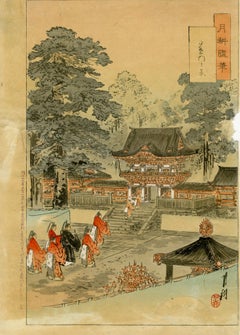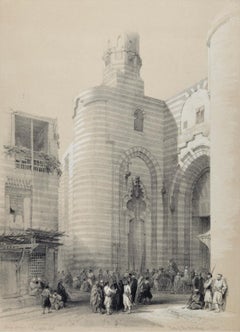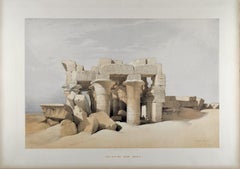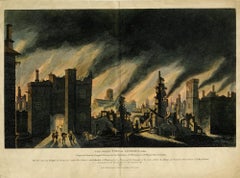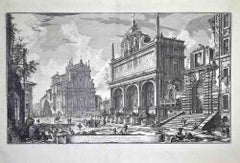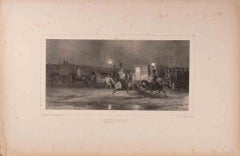19th Century Landscape Prints
Edo 19th Century Landscape Prints
Watercolor, Handmade Paper, Woodcut
Realist 19th Century Landscape Prints
Lithograph
Realist 19th Century Landscape Prints
Lithograph
English School 19th Century Landscape Prints
Engraving, Watercolor, Handmade Paper
Modern 19th Century Landscape Prints
Etching
Modern 19th Century Landscape Prints
Lithograph
Edo 19th Century Landscape Prints
Ink, Rice Paper, Woodcut
Modern 19th Century Landscape Prints
Lithograph
Realist 19th Century Landscape Prints
Laid Paper, Lithograph
American Realist 19th Century Landscape Prints
Lithograph
Realist 19th Century Landscape Prints
Etching, Aquatint
Modern 19th Century Landscape Prints
Woodcut
American Realist 19th Century Landscape Prints
Monotype
French School 19th Century Landscape Prints
Handmade Paper, Engraving, Lithograph
English School 19th Century Landscape Prints
Laid Paper, Etching
Edo 19th Century Landscape Prints
Watercolor, Handmade Paper, Woodcut
Naturalistic 19th Century Landscape Prints
Lithograph
Modern 19th Century Landscape Prints
Lithograph
Modern 19th Century Landscape Prints
Lithograph
Naturalistic 19th Century Landscape Prints
Lithograph
Realist 19th Century Landscape Prints
Lithograph
English School 19th Century Landscape Prints
Handmade Paper, Engraving, Lithograph
Naturalistic 19th Century Landscape Prints
Lithograph
Modern 19th Century Landscape Prints
Etching
Naturalistic 19th Century Landscape Prints
Lithograph
Realist 19th Century Landscape Prints
Laid Paper, Etching, Aquatint
Naturalistic 19th Century Landscape Prints
Lithograph
Naturalistic 19th Century Landscape Prints
Lithograph
French School 19th Century Landscape Prints
Laid Paper, Drypoint, Etching
19th Century Landscape Prints
Paper, Woodcut
19th Century Landscape Prints
Etching
English School 19th Century Landscape Prints
Watercolor, Handmade Paper, Lithograph
Realist 19th Century Landscape Prints
Lithograph
Other Art Style 19th Century Landscape Prints
Lithograph
Modern 19th Century Landscape Prints
Etching
19th Century Landscape Prints
Etching
Surrealist 19th Century Landscape Prints
Etching
19th Century Landscape Prints
Mezzotint
Modern 19th Century Landscape Prints
Lithograph
Victorian 19th Century Landscape Prints
Lithograph
Modern 19th Century Landscape Prints
Etching
Victorian 19th Century Landscape Prints
Engraving, Woodcut
Victorian 19th Century Landscape Prints
Lithograph
Modern 19th Century Landscape Prints
Etching
Naturalistic 19th Century Landscape Prints
Etching
French School 19th Century Landscape Prints
Handmade Paper, Etching
Modern 19th Century Landscape Prints
Etching
Post-Impressionist 19th Century Landscape Prints
Oil
Romantic 19th Century Landscape Prints
Lithograph
Other Art Style 19th Century Landscape Prints
Lithograph
Edo 19th Century Landscape Prints
Watercolor, Handmade Paper, Woodcut
Modern 19th Century Landscape Prints
Etching
Modern 19th Century Landscape Prints
Etching
Modern 19th Century Landscape Prints
Etching
Modern 19th Century Landscape Prints
Etching
Modern 19th Century Landscape Prints
Etching
Modern 19th Century Landscape Prints
Etching
Modern 19th Century Landscape Prints
Etching
Naturalistic 19th Century Landscape Prints
Lithograph
Victorian 19th Century Landscape Prints
Watercolor
